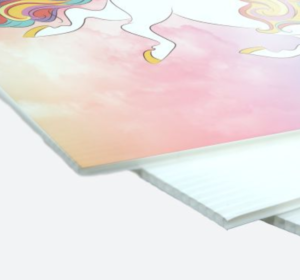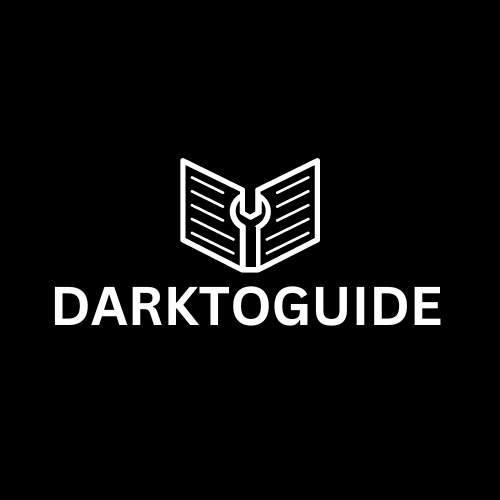Sustainability is no longer a buzzword—it’s a necessity. As the world becomes more aware of its environmental impact, industries across the globe are seeking materials that are more sustainable and eco-friendly. This is especially important in sectors like signage, event displays, and outdoor advertising, where materials like Correx are widely used.
Correx, a corrugated plastic material often used for Correx board printing, has become a popular choice for signs, hoarding boards, and temporary advertisements. But is Correx environmentally friendly? In this blog, we’ll delve into the environmental implications of using Correx, exploring its sustainability, recyclability, and impact, while also looking at alternatives and best practices for reducing its environmental footprint.
What is Correx?
Before we discuss its sustainability, let’s first define what Correx is. Correx is a lightweight, durable plastic material made from polypropylene. It’s widely used for creating signage, advertising displays, hoarding boards, and bollard covers. Its versatility, cost-effectiveness, and weather resistance make it a popular choice for both indoor and outdoor advertising, especially in temporary applications.
The material is known for its strength, making it ideal for large-format Correx board printing and outdoor uses. However, with increasing concerns about plastic waste, many businesses and consumers are questioning whether Correx is the right choice from an environmental standpoint.
Environmental Impact of Correx
One of the key aspects of sustainability is the environmental impact of materials throughout their lifecycle—from production to disposal. In the case of Correx, there are several considerations.
Production and Manufacturing
The production of Correx involves the use of polypropylene, a petroleum-based plastic. While polypropylene is generally considered a relatively energy-efficient plastic compared to others, its production still requires fossil fuels and emits greenhouse gases. The carbon footprint of producing Correx is a concern for those looking for truly sustainable materials.
Durability and Use
On the positive side, Correx’s durability is a significant advantage. It’s weather-resistant, lightweight, and has a long lifespan, which means less frequent replacements are needed compared to other materials. This durability makes it a good choice for bollard covers or outdoor signage that needs to withstand harsh conditions. The longer the material lasts, the less waste it generates.
End-of-Life and Disposal
The main challenge with Correx, from an environmental perspective, lies in its disposal. Correx is not biodegradable, meaning it can persist in the environment if not properly disposed of. While it can be recycled, the recycling rate for Correx is relatively low, and many Correx boards end up in landfills or incinerators.
In order to mitigate this, businesses can adopt responsible practices by reusing Correx boards for multiple purposes or by ensuring that they are sent to recycling facilities that accept polypropylene materials.
Is Correx Recyclable?
One of the main questions surrounding Correx’s environmental sustainability is whether it is recyclable. The answer is yes—Correx is made from polypropylene, a recyclable plastic. However, its recyclability is not always straightforward.
Recycling Correx requires specific facilities that can process polypropylene, and not all recycling centres are equipped to handle this material. If not properly sorted, Correx may end up being discarded as general waste. To address this issue, some businesses have adopted Correx board printing practices that allow for reuse and recycling. Additionally, some Correx manufacturers are now producing boards using recycled polypropylene, further reducing the environmental impact.
Recycling Correx: Best Practices
Here are some key ways to ensure that Correx is recycled correctly:
- Choose Recycled Correx: Where possible, opt for Correx made from recycled materials.
- Encourage Recycling: Work with local recycling facilities that accept
- polypropylene.
- Reuse: Reusing Correx for multiple projects or repurposing it for different applications can help extend its life.
Eco-Friendly Alternatives to Correx
While Correx has some environmental challenges, there are alternative materials that offer more sustainability. These materials can be used in the same applications as Correx but have a lower environmental impact.
1. Biodegradable Plastics
Biodegradable plastics, such as those made from plant-based materials, are an excellent alternative to Correx. These materials decompose more quickly in the environment and are less likely to contribute to long-term plastic waste.
2. Recycled Cardboard
For certain applications, recycled cardboard can be used instead of Correx. Cardboard is biodegradable and can be recycled easily, making it an eco-friendlier option for temporary signage and displays.
3. Sustainable Wood or Bamboo
For a more natural and eco-conscious alternative, sustainable wood or bamboo can be used for signage. These materials are renewable, biodegradable, and provide a sturdy solution for long-term use.

Best Practices for Reducing Correx’s Environmental Impact
If your business relies on Correx, there are several steps you can take to minimise its environmental footprint.
1. Opt for Recycled or Recyclable Correx
Whenever possible, choose Correx board printing products made from recycled polypropylene. This helps reduce the demand for virgin plastic and supports a circular economy.
2. Repurpose and Reuse
Repurpose Correx materials for other uses once their original purpose has ended. For example, bollard covers made from Correx can be used in other outdoor applications, helping to extend their life and reduce waste.
3. Educate Customers and Suppliers
Encourage your suppliers to adopt sustainable practices, such as using recycled materials for production or ensuring that their Correx boards are recyclable. Additionally, educating your customers about proper disposal and recycling can have a significant impact on reducing waste.
The Future of Sustainable Signage and Materials
As demand for more sustainable materials increases, the signage industry is slowly shifting toward more eco-friendly alternatives. The growing focus on sustainability is driving innovation, and we may see the development of new materials that are both durable and environmentally responsible.
Some brands are already experimenting with digital signage and other alternatives that reduce the reliance on physical materials like Correx. This could be an exciting direction for the future, as businesses look for more sustainable solutions.
Conclusion
While Correx offers many benefits, including durability and versatility for bollard covers and outdoor signage, it also presents environmental challenges, particularly in terms of recyclability and disposal. However, with the right practices—such as opting for recycled Correx, reusing materials, and properly recycling used boards—its environmental impact can be mitigated.
As the demand for sustainability grows, businesses should consider not only the materials they use but also how they can be responsible stewards of the environment. At VC Print, we strive to offer solutions that balance quality and sustainability, ensuring that our customers can make more environmentally-conscious choices while still achieving the results they need.
Author Name: Nimesh Kerai
Serving as the Head of Printing at VC Print, Nimesh Kerai is a distinguished expert in the field. His remarkable technical skills, combined with his keen awareness of the latest advertising trends, have propelled the company to notable success. Over the years, Nimesh has gathered a wealth of knowledge, which he frequently imparts through engaging and informative blog posts.
